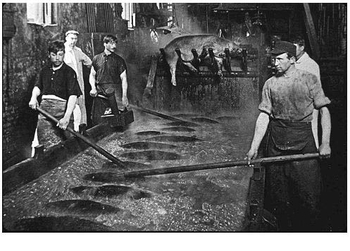Strategies for Reducing Warehouse Costs
Strategies for Reducing Warehouse Costs
 Over the past decade as labor rates have increased an average of $5.50 to $10.50 per direct labor hour and orders processed per full-time warehouse worker have remained flat, the dollars of sales processed per warehouse sq. ft. have declined and the $64,000 question on many business owners’ minds is how to boost warehouse productivity. Here are some tips to make your warehouse more productive.
Over the past decade as labor rates have increased an average of $5.50 to $10.50 per direct labor hour and orders processed per full-time warehouse worker have remained flat, the dollars of sales processed per warehouse sq. ft. have declined and the $64,000 question on many business owners’ minds is how to boost warehouse productivity. Here are some tips to make your warehouse more productive.
Start with a warehouse audit to measure your current warehouse productivity and other patterns and trends. An audit enables you to do internal and external comparisons. With the data you gather from this comparison, you can devise an action plan for improvement. Some companies opt to contract with an independent third party to conduct an audit for an unbiased opinion. Use your audit to evaluate your operation against a set of internal expectations and external, industry recognized practices. Measuring labor, facilities, systems and workflow procedures allows you to see the current state of your warehouse so you can set realistic goals and the course of action you want to take to accomplish them.
The goal of any warehouse should be to boost the amount of products stored. Powered conveyor placement, multilevel order-picking, mezzanines and racking should be configured to increase your facility’s efficiency. Adequately utilizing your cubic space is crucial. Use a warehouse management system that supports the min-max and demand-replenishment concepts. There’s nothing more inefficient in a warehouse than an insufficient amount of product when a picker needs it. Maximize unit movement in pick slots by storing at least one week’s average unit movement in areas you designate as hot pick areas for products that move quickly. This will reduce a picker’s time spent walking around looking for products in the warehouse. Bar code technology is a tremendous help when it comes to tracking products and orders and verifying accuracy. By developing an ROI study, bar codes can help to show where potential savings can be gained.
A clean warehouse is an efficiently run warehouse. You can tell a lot about a warehouse from its overall organization and appearance. Warehouse facilities should be designed to maximize flexibility, being as scalable as possible. Everyday merchants change the product profiles they offer. Underestimating future inventory levels can impede operations. Be sure to allocate space for future expansions. A warehouse inventory system that tells you where products are stored in each location and how much of the product is available in each location is essential to warehouse efficiency. Investing in an efficient stock-locator system can save you time and money.
Successful warehouses have devised vendor-compliance programs that define any expectations or specifications they require of every vendor. When vendors fail to comply, shipalones may have to be repacked and result in an increase to your labor costs, vendor bar code labels may not be reusable or readable resulting in an increase to your labor costs or improperly packaged products could actually damage your warehouse. When metrics are used to measure your workers’ performance, expectations are more clearly defined and workers are more likely to improve their productivity.


